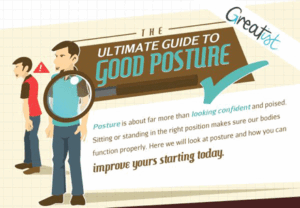Your Referrals Can Be A ‘Real’ Pain
No, I don’t mean the favor of your referrals of friends and family. We LOVE to get those. Today I want to talk about a type of pain known as ‘referred pain’. Referred pain is something that all of us have experienced at one time or another, yet may not have known what was happening. For example, have you ever had a headache that seems to be shooting through the back of your eye? Believe it or “knot”, that pain may be referring from your neck or shoulders.
What you commonly call a ‘knot’ is also known as a trigger point. These pesky little monsters can build up over time and without warning…BANG! You have a pain that is shooting up into your head, or down your leg (no, it’s not always sciatica pain).
Trigger points are taut little bands within a muscle that are caused from overuse, stress or constant repetitive use of a muscle. They tend to start off small, so small you don’t even know they are there. Over time, the muscle begins to develop a holding pattern or micro-contraction that allows it to both function normally as well as defend against too much strain. These silent monsters are what are known as ‘latent’ trigger points, meaning they exist, yet they aren’t signaling negative feedback alerting you to any issue. This is your body’s own way of self regulating and working efficiently to keep you moving. When they become ‘active’ is when you start to experience pain. At this point you may begin to compensate by sitting, walking or, if training, running differently in a means to alleviate the pain you are experiencing. Periodically, this will do the trick for one symptom of pain, but starts a cascading impact on your body in the way you now move, sit or even sleep, creating new symptoms of pain.
 You may have experienced, in the course of a treatment, your therapist pressing on an area that you did not know was even an issue. As they dug deeper, the pain begins to radiate to another place. They have found a ‘latent’ trigger point that has been dormant, but prepared to withstand the next overload to the area. By palpating, pressing and addressing these trigger points, they can begin to teach the muscle to essentially let go. Once the trigger point has been addressed, the next step is to provide some neurological feedback to it by stretching it into its new resting state, hence ‘releasing’ any hold within the muscle. Take notice of the charts you see in the treatment rooms. They often indicate patterns that our patients present with. These charts help you better understand your body.
You may have experienced, in the course of a treatment, your therapist pressing on an area that you did not know was even an issue. As they dug deeper, the pain begins to radiate to another place. They have found a ‘latent’ trigger point that has been dormant, but prepared to withstand the next overload to the area. By palpating, pressing and addressing these trigger points, they can begin to teach the muscle to essentially let go. Once the trigger point has been addressed, the next step is to provide some neurological feedback to it by stretching it into its new resting state, hence ‘releasing’ any hold within the muscle. Take notice of the charts you see in the treatment rooms. They often indicate patterns that our patients present with. These charts help you better understand your body.
Trigger points are not always avoidable, but they are manageable. Until we can eliminate gravity, stress and technology, our bodies will always fall victim to trigger points. The next time your body signals to you that it is in pain, don’t ignore it by popping a pill or compensating. Take a moment to note these little triggers and bring them to the attention of your therapist. They will likely be able to provide you with some relief. They may also suggest some stretches or self-care technique with a tennis ball that may be able to alleviate the trigger on your own if it should rare its ugly head in the future.
So, keep the referrals of your friends and family coming and say goodbye to those pesky referrals that cause you pain. If you have any suggestions or ideas about anything you would like to learn more about, please shoot me an email at [email protected].
Ready to #feelbetter?
You're just a click away from a wicked good massage!
-

60 Minute Massage Gift Card
$170.00 Add to cart -

90 Minute Massage Gift Card
$255.00 Add to cart -

Mini Aer Small Room Air Purifier
$149.00 Add to cart -
Sale!

Thera-Pearl Sports Pack/Hot Cold
Original price was: $14.99.$12.99Current price is: $12.99. Add to cart -

3 Somadome Sessions Gift Card
$135.00 Add to cart -

TheraBand CLX Connective Loop
$14.99 Select options -

6 Somadome Sessions Gift Card
$270.00 Add to cart -
Sale!

Biofreeze
Original price was: $14.99.$12.99Current price is: $12.99. Add to cart
Passion Mountain
I was at an event recently and was asked by somebody how I could STILL be so passionate for what I do. He said, “What I mean is that you talk about what you do with the passion of child flipping through a new pack of baseball cards. I wish I was that passionate about…
Read MoreFish You Should Scale Back On
New Englander’s love their seafood and we deepen our love affair every summer when our favorite crustaceans, ‘lobstah’ is a plentiful. But what is the best seafood for us and what are the ones that we should be staying away from regardless of how yummy they may be? Monterey Bay Aquarium has combined data from…
Read MoreSports are a Great Metaphor
It’s no secret that my life has always revolved around athletics. From my early days playing pop warner football, through my college years of lacrosse and on into the various community leagues since, being part of a team has always been where I feel most comfortable. What I enjoy most about being part of a…
Read MoreWhat is an Expert?
“An expert is someone widely recognized as a reliable source of technique or skill whose faculty for judging or deciding rightly, justly, or wisely is accorded authority and status by their peers or the public in a specific well-distinguished domain.” – Wikipedia This past month I flew to Atlanta to present a few classes in…
Read MoreThe Power of a Hug
Originally Posted 5/1/2014; following the 1 year anniversary of the Boston Marathon Bombings and our mission to rebound after these horrible attacks on our city. We helped orchestrate the ‘One Run for Boston’; a 3328.2 NON-STOP running relay from LA to Boston, raising over $500K for the victims and survivors of the events of 4/20/2013.…
Read MoreTips from the Table
Without fail, every marathon season, I am asked by my patients, what kind of advice I would offer up to them as they prepare to run the Boston marathon. I first admit that I have never (nor will ever) run a marathon, but given my unique insight of spending 1000’s of hours alone in a…
Read MoreShoulder Impingement
The glenohumeral joint is a highly complex articulation. It has the greatest range of motion of any joint in the body. However, its increased motion occurs at the expense of stability, requiring the soft tissues to play a more critical role in maintaining joint integrity. As a result of increased mechanical demands, numerous soft-tissue injuries…
Read MoreTrain, train, train. Train of fools.
In my seventeen years as a massage therapist, I am still amazed by some of the things I see in my office. Being situated 1/10th of a mile from the finish line of one of the most prestigious marathons in the world, the Boston Marathon, we see more than our fair share of runners coming…
Read MoreAchilles Tendon Disorder
Achilles Tendon Disorder Massage therapists see many clients with active lifestyles. Running, jumping, dancing, climbing, or any number of other activities can put serious stress on the Achilles tendon (AT). AT disorders also can contribute to biomechanical disorders in the foot and lower extremity. That is why it is important for the massage practitioner to…
Read More


